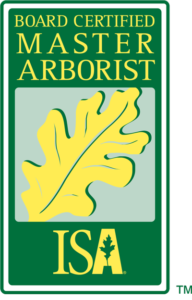Tree Health 101: Signs Your Tree is Sick
Introduction
Trees are vital components of our ecosystem and our neighborhoods, providing beauty, shade, and environmental benefits. However, just like any other living organism, trees can get sick. Detecting the early signs of distress can help prevent diseases from spreading and potentially save the tree’s life. In this blog post, we’ll explore common indicators that a tree is suffering from disease or pest infestation, and what steps you should take to address these issues.
Common Signs of Tree Distress
1. Leaf Discoloration
Unusual leaf colors can be a sign of nutrient deficiencies or disease. Yellowing leaves might indicate a lack of key nutrients such as iron or nitrogen, whereas black or brown spots could suggest a fungal infection.
2. Premature Leaf Drop
While it’s normal for trees to shed leaves in the autumn, dropping leaves prematurely or during growing seasons is a sign that your tree might be stressed. This could be due to environmental factors, pests, or disease.
3. Weak Branches
If branches break off easily or die back, it could be due to pest infestations or disease. Weak branches not only pose a safety hazard but also indicate overall tree health issues.
4. Visible Pests
The presence of insects such as borers, beetles, or caterpillars can be detrimental to tree health. These pests often feed on tree leaves and burrow into the bark, severely weakening the tree over time.
5. Fungi Growth
Mushrooms or fungi growing on or near the tree’s base can indicate root decay or other internal issues. Fungal diseases can quickly compromise tree stability and health.
6. Cankers
Cankers are dead sections on the bark of a tree, often caused by fungi or bacteria. These lesions can girdle a branch or trunk, disrupting the flow of nutrients and water within the tree.
7. Bark Abnormalities
Cracks, splits, or peeling bark are concerning signs. Healthy trees have intact bark. Any compromise in the bark layer can make the tree vulnerable to infections and pests.
What to Do If Your Tree Shows Signs of Distress
1. Consult a Professional Arborist
If you notice any of the above symptoms, it’s crucial to consult a professional arborist. Arborists can provide a proper diagnosis and the best course of treatment to help save your tree.
2. Proper Care and Maintenance
Ensure your trees are well-watered, especially during dry spells, and mulched correctly to provide nutrients and retain soil moisture.
3. Pruning
Properly pruning dead or infected branches can help prevent the spread of disease. It’s important to use sanitized pruning tools to avoid contaminating other parts of the tree.
4. Monitor Regularly
Keep an eye on your trees regularly for any signs of disease or pest issues. Early detection is key to managing tree health effectively.
Conclusion
Understanding the signs of tree sickness and taking prompt action can significantly impact the health and longevity of your trees. Remember, healthy trees are less susceptible to disease and can better withstand the stresses caused by their environment. By staying vigilant and proactive in tree care, you can ensure that your trees remain a valuable and beautiful part of your landscape for years to come.


